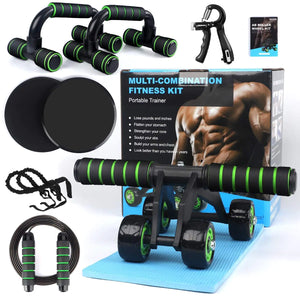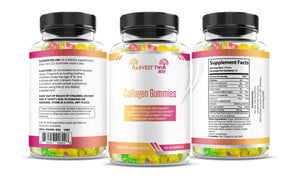
As we move through midlife and beyond, many people notice that tasks once taken for granted – carrying groceries, lifting luggage, or even opening a tight jar – start to feel more difficult.
This is often the result of gradual muscle loss, a natural process that becomes more pronounced with age. The staff at Nifty Cool Stuff, our online lifestyle store, notes that while some decline in muscle mass is inevitable, the good news is that it’s never too late to take action.
With the right approach, you can build new muscle, preserve strength, and maintain independence well into your later years.

Why Building Muscle Gets Harder with Age
Starting in our 30s, adults lose an average of 3%-8% of lean muscle mass each decade, with the pace accelerating after 50. Several factors contribute to this process. Hormone levels naturally decline, which reduces the body’s ability to build and repair tissue.
Muscles also become less responsive to protein, making diet a more critical factor in maintaining strength. Inflammation tends to rise with age as well, further hampering muscle recovery.

But lifestyle plays just as big a role as biology. The less you use your muscles, the faster they weaken. This can set off a downward spiral: exercise feels harder, so activity levels drop, which in turn makes exercise even more challenging.
The reverse, however, is also true. Those who continue strength training into their middle and older years often retain significantly more muscle than those who stop.

Strength Training: The Foundation of Muscle Maintenance
Resistance training is the single most effective way to preserve and build muscle at any age. Whether you use free weights, resistance bands, or machines, the goal is to push your muscles beyond their comfort zone.
It doesn’t necessarily matter if you’re lifting heavy weights for fewer repetitions or lighter weights for more; the key is to work to the point where the last few reps feel challenging.
Consistency is critical. Because aging muscles lose mass more quickly if neglected, it’s important to make strength training a regular habit.

Just two 20- to 30-minute sessions per week can deliver significant benefits. Over time, the gains compound, making everyday tasks easier and reducing the risk of falls or injuries.
Nutrition: Fueling Muscle Growth
Exercise alone isn’t enough. Nutrition plays a vital role in building and maintaining muscle.
As the body becomes less sensitive to protein with age, older adults may need higher amounts to stimulate muscle repair. Distributing protein evenly across meals, rather than consuming it all at once, can help maximize its effectiveness.

Carbohydrates are also important, especially for fueling workouts. Complex carbohydrates such as whole grains, legumes, and vegetables provide steady energy, while simple carbs like fruit can be useful before or after exercise for a quick boost.
Some older adults may also benefit from supplements such as creatine, which has been shown to support strength and muscle growth when combined with resistance training.

Recovery: The Often-Overlooked Step
One of the biggest differences between younger and older bodies is recovery time. Muscles that once bounced back quickly now need longer periods to heal and grow stronger.
Allowing adequate rest between strength training sessions is crucial. This doesn’t mean complete inactivity, light activities like walking, stretching, or cycling on recovery days can support circulation and help reduce stiffness.

Other aspects of recovery are just as important.
Sleep is when much of muscle repair takes place, so prioritizing quality rest is essential. Managing stress can also reduce chronic inflammation, further supporting muscle health.

Patience and Persistence
Progress may not come as quickly in midlife as it did in youth, but that doesn’t mean it won’t happen. Building muscle later in life requires persistence, consistency, and patience.
It may take longer to notice visible changes, but strength gains occur steadily with continued effort. The long-term payoff – greater independence, resilience, and vitality – is well worth it.

Putting It All Together
Building muscle as you age isn’t about chasing the same physique you had at 25. Instead, it’s about creating a foundation of strength that supports daily life and overall health.
By committing to regular resistance training, eating a protein-rich and balanced diet, respecting recovery, and staying consistent, you can slow the natural decline of muscle and even reverse some of its effects.
Your future self will benefit from the choices you make today, and Nifty Cool Stuff features products that can assist you along the way, so give us a click, look around, and decide what would work for you.

No matter when you start, it’s possible to build stronger muscles, increase energy, and enhance your quality of life. Aging may change the body, but with the right habits, you can stay strong at every stage of life.


















































